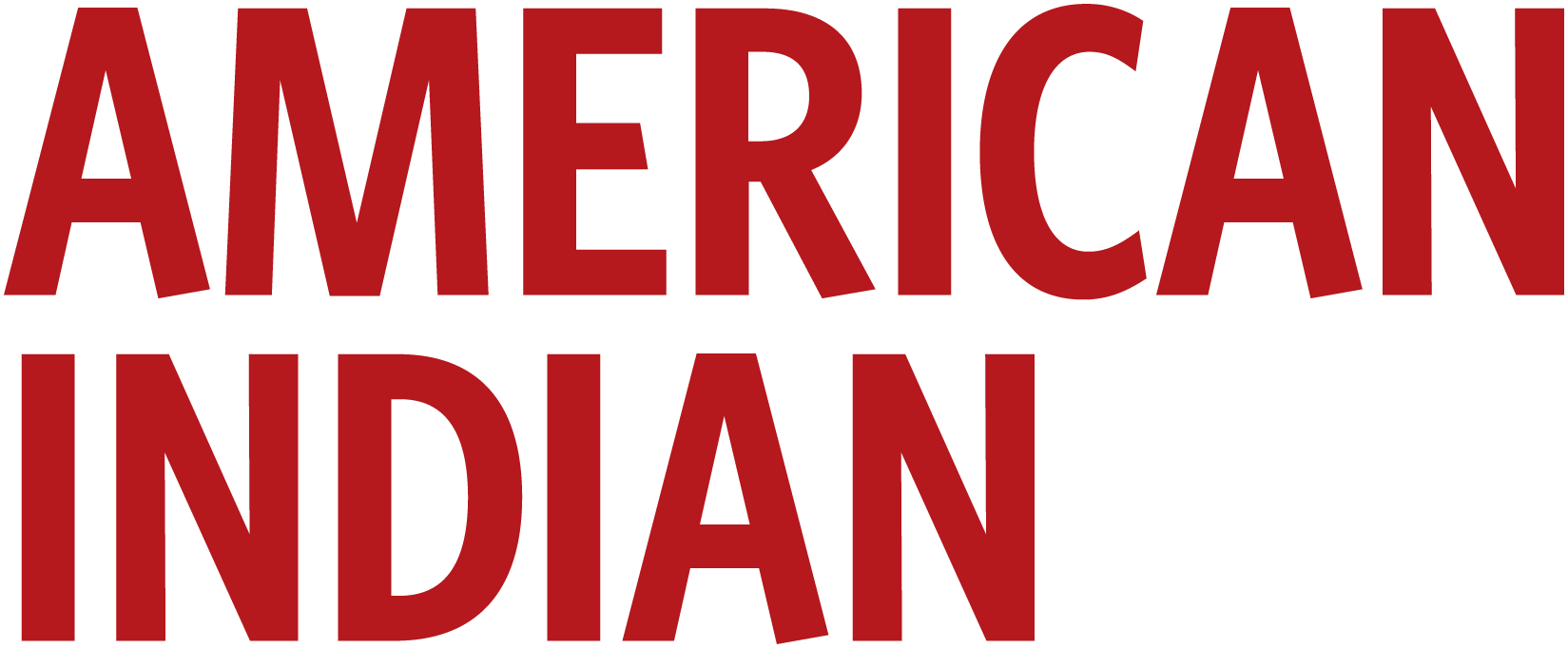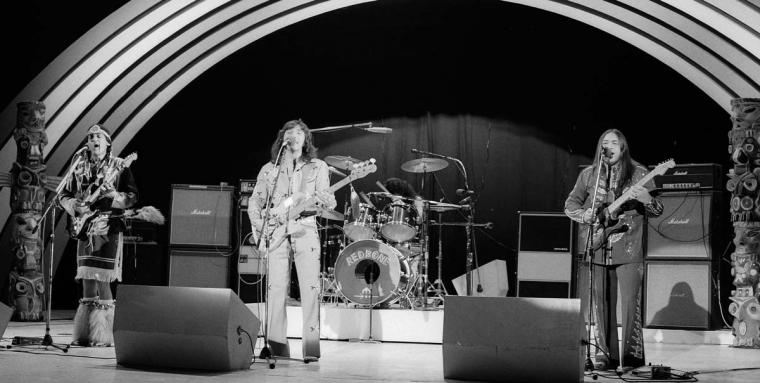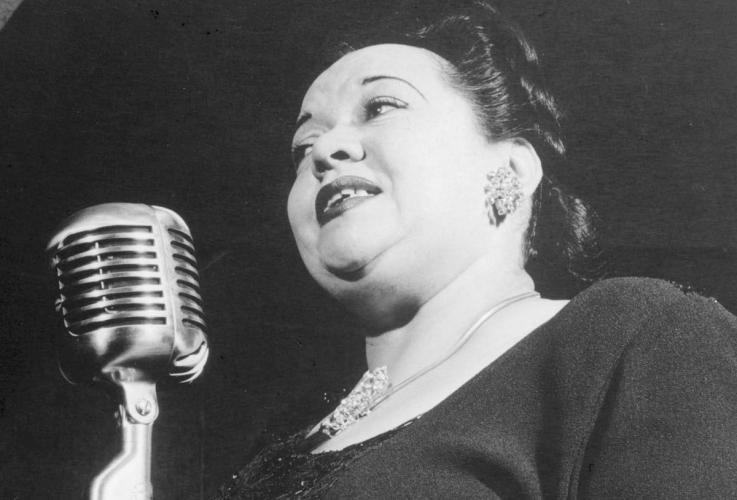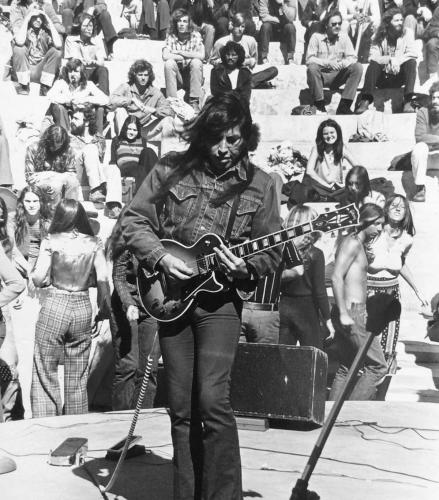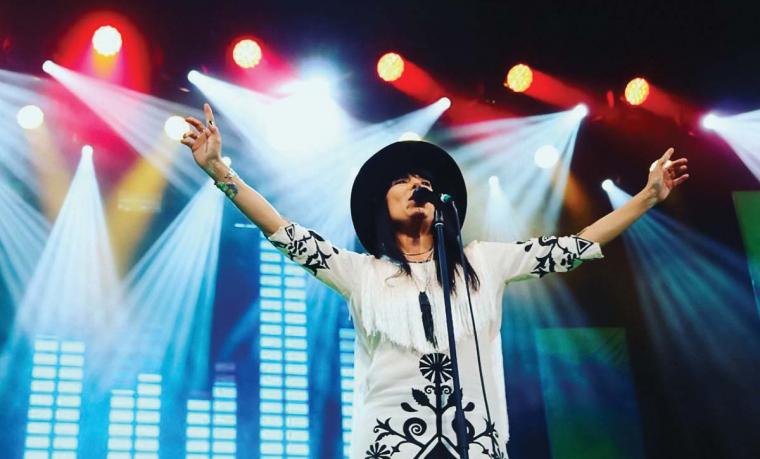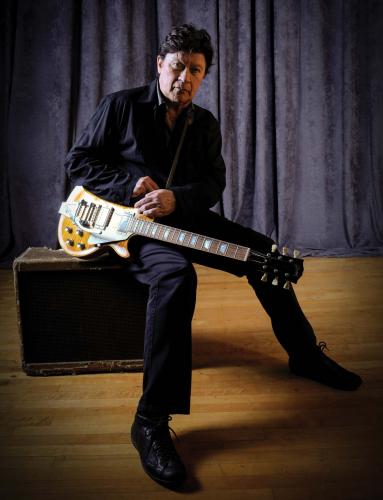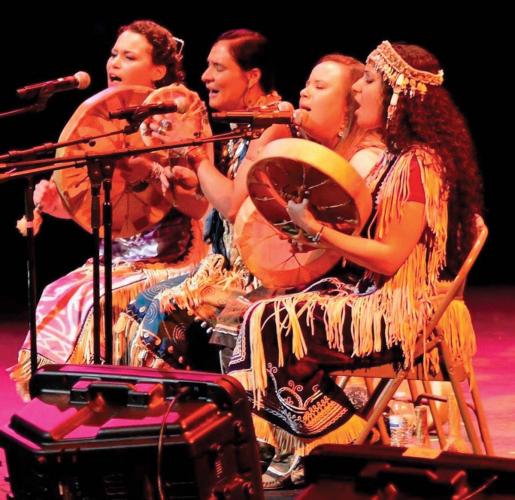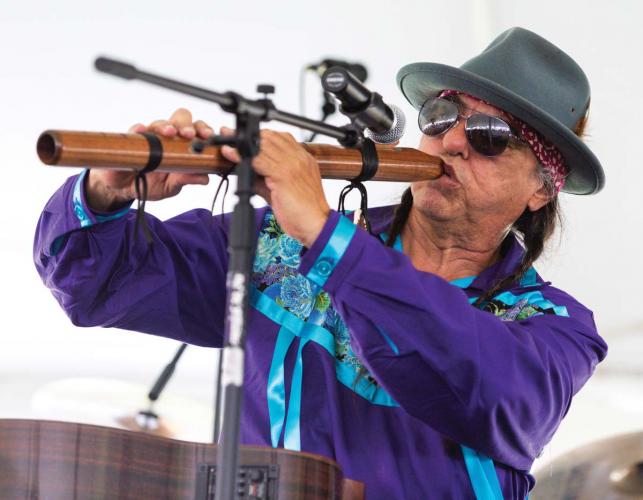In the opening scenes of the 2014 Marvel movie “Guardians of the Galaxy,” actor Chris Pratt lip-syncs and dances to an iconic rock song, “Come and Get Your Love” by Redbone. The Los Angeles-based band, whose members were of American Indian and Mexican heritage, named their band after a Cajun slang term for a mixed-race person. In 1974, they became the first Indigenous band with a top-five hit on the Billboard 100 chart. Nearly a half century later, the song’s inclusion in a blockbuster film helped to reenergize the Indigenous music industry and open doors for contemporary Indigenous performers and producers.
The Indigenous music industry has boomed during the last decade, amplified by streaming services that cater to audiences hungry for new sounds. Indigenous artists started to reach many more consumers, particularly in the United States, through digital distribution and invitations to perform at festivals and venues typically reserved for non-Native musicians. Today, a wide range of Indigenous music—from traditional flute and drum music to blues, rock and rap—fills small community centers and expansive stadiums.
First Beats
Before European contact, Indigenous music in the Americas had been performed only at ceremonies or social gatherings. Central to many such traditional ceremonies is the drum, often accompanied by other types of percussion instruments, flutes, and rattles. Then, beginning in the 1800s, non-Native ethnomusicologists and anthropologists who thought these sounds were going to disappear along with the cultures who created them began making a concerted effort to document the music.
Starting in the late 1880s, the U.S. and Canadian governments established boarding and residential schools where Native and First Nations children forcibly taken from their families were taught colonial ways and dressed in colonial clothes in an attempt to erase all evidence of their cultures. These institutions, along with government laws and policies, made Indigenous children and by extension their family members suppress their languages, dances and music.
“If you wanted to play a drum song, you needed to have a reason why you were singing that song and you needed to have permission from your local Indian agent to pursue music,” said Dave McLeod, executive producer of the radio show Indigenous Music Countdown, who is Anishinaabe and a member of Pine Creek First Nation in Manitoba, Canada. “That went on, depending on where you were, anywhere between 50 to 70 years. That was a long period faced by at least two to three generations.”
The government policies that were intended to erase Indigenous cultures led to many people feeling ashamed about their heritage. Much cultural knowledge, including languages, music and songs, was lost as it was not being passed from one generation to the next.
Some Indigenous musicians began adopting non-Indigenous music genres such as hymnal and fiddle music and then jazz and folk. For example, jazz singer Mildred Bailey, whose mother was of the Coeur d’Alene peoples in Idaho, became known as the “Queen of Swing” during the 1930s. Bailey, who was often thought to be white, never hid her identity but it also did not become part of the narrative of jazz music.
The American Indian Religious Freedom Act allowing Native Americans to dance and play Indigenous music uncensored in the United States was not passed until 1978. In Canada, the 1876 Indian Act was established to determine who was considered “Indian,” dictate guardianship of Indigenous children and mandate other rules designed to suppress Indigenous cultures. This was revised in 1951, finally allowing First Nations peoples to practice their religions and gather more than three at a time. In turn, this opened up opportunities for Indigenous musicians to perform in public spaces.
Among the first Indigenous folk singers during the 1960s and 1970s were Willie Dunn (Mi’kmaq), Floyd Red Crow Westerman (Dakota) and Willie Thrasher (Inuvialuit). One of the first well-known Indigenous rock musicians during this same period was Link Wray, the Shawnee inventor of the electric guitar “power chord” and writer of the song “Rumble,” which is still popular on movie soundtracks. Equally influential, Jesse Ed Davis, a Kiowa and Comanche guitarist, played on albums for Bob Dylan and members of the Beatles and joined Conway Twitty and Rod Stewart as a background guitarist during live shows.
During the 1970s, when Redbone was performing their biggest hit on the TV show “Midnight Special,” Indigenous families were leaving reserves and reservations and moving into urban areas such Winnipeg, Canada; Chicago, Illinois; and San Francisco, California. In Winnipeg, in the province of Manitoba in central Canada, Indigenous musicians performed in the city’s bar and restaurant area known as “the Strip.” A city regulation requiring that bars have live music in order to allow dancing helped to keep performers on local stages.
“People wanted music. They wanted to celebrate. They wanted to dance,” recalled McLeod. “So you had a group like The Feathermen emulate in a Native style what the Rolling Stones sounded like, or The Animals or those types of bands. And I think Manitoba played a unique role because of that.”
“I think a great inspiration came from those eras because of necessity.” Yet, he added, “at the same time, it was hard to break into other venues outside of those bars on the Strip because people quite often didn’t want to have Indigenous people go into their establishments.”
Taking Center Stage
Music awards have played a large role in introducing many Indigenous artists to a wider audience and illuminating the growing Indigenous music community. The Native American Music Awards, the Nammys, began in 1998. The Canadian Aboriginal Music Awards began in Toronto, Ontario, in 1999. Then in 2006, the Aboriginal People’s Choice Music Awards began honoring Indigenous musicians and their work in a show that was mostly voted on by the public. This morphed into the Indigenous Music Awards and was a juried vote by industry professionals.
These and other award shows that created separate categories for Indigenous music initiated a decade-long conversation about whether this music was a genre or not. They also inspired music festivals, which initially were piggy-backed onto award shows.
Alan Greyeyes, an Anishinaabe festival director from Peguis First Nation in Manitoba, founded Aboriginal Music Week in 2009. This summer celebration is now known as the sākihiwē (“love another” in Cree) festival. Greyeyes also has sat on the Indigenous music committee for the Canadian Academy of Recording Arts and Sciences, which oversees the Juno Awards, Canada’s equivalent to the Grammy Awards.
Organizations putting on such events are many today, but when Greyeyes first began his career almost 20 years ago, he felt very much alone. “There weren’t a lot of Indigenous folks at any of these events like the Juno Awards, Break Out West, South by Southwest, all these big conferences that kind of serve as the entry point to making music your full-time job for people on the artistic side and networking for folks in the business. There was very few of us out there,” said Greyeyes.
ShoShona Kish echoes his feeling. Kish, who is an Ojibway Anishinaabe music producer, co-founded Ishkōdé Records with Métis singer-songwriter Amanda Rheaume. Kish is lead singer of the blues, reggae and soul group Digging Roots, which she formed with her Onkwehón:we and Anishinaabe husband Raven Kanatakta in 2004. “I had a dream of starting a label, probably starting about 20 years ago, when we first really started being immersed in the music space and realized how little there was there for us as artists,” she reflected.
But then a few years ago the opportunities for musicians and producers expanded, in part as a result of a lawsuit by First Nations and Inuit peoples who wished to bring attention to Canada’s role in creating and perpetuating the injustices of Indian residential schools. In 2007, Canada’s government formed the Truth and Reconciliation Commission to research and listen to survivors’ stories. Eight years later, it released its final report, which has 94 “calls to action” that appeal for funding for a range of fields, from the government’s healthcare and judicial systems to education and arts.
Greyeyes said this was a turning point. “I think for the most part, not very many people knew about residential schools or the systemic barriers we were facing, and oftentimes I would be the only person in boardrooms and meetings talking about that stuff,” said Greyeyes. Once the report was released, he said, “There was an interest, and not only within members of music and other nonprofits in the music industry, but also the funding agencies were very interested in figuring out how they can support Indigenous people.”
Sharing the Spotlight
Today’s contemporary Indigenous musicians are performing every kind of music, from traditional music of hand drums, powwow and fiddle music to country, blues, pop, folk and hip hop. They also can be heard as part of new musical styles that have popped up in the past two decades, such as the electronic, rhythmic dance beats of dubstep, which originated in London during the early 2000s. Their sounds are reaching audiences beyond their borders, as many have made the leap from stage to screen.
The all-women traditional drum and vocal group Ulali, originally comprised of Charly Lowry (Tuscarora/Lumbee), Pura Fé (Tuscarora/Taíno), Jennifer Kriesberg (Tuscarora) and Layla Rose Locklear (Tuscarora-Lumbee/Lakota), shot to fame after performing on Robbie Robertson’s solo album “Music for the Native Americans” in 1994. Robertson, a Cayuga and Mohawk singer and composer from the Six Nations of the Grand River reserve southwest of Toronto, was the lead guitarist for Bob Dylan in the 1960s. In the following decades of his long career, he would go on to write the score for many leading films, including “Killers of the Flower Moon,” which was released just after he died in 2023.
Ojibwe musician Keith Secola, who sings and plays both traditional flute and guitar, started his music career in the 1990s. He won in the category of “Best Artist” for his album ”Native Americana” at the 2006 Native American Music Awards. He had a huge hit in Indian Country with the still-popular song “NDN Kars” that was rerecorded by Anishinaabe rapper Shawn Bernard and featured Cree and Métis rapper Joey Stylez, whose music has been featured on the recent television series “Reservation Dogs” and “Yellowstone.”
The Indigenous music industry continues to grow because of people like Greyeyes, McLeod and Kish, who push for inclusion and space for Indigenous musicians, whether on stage or on the airwaves. Since launching in 2000, the Indigenous Music Countdown has evolved into a weekly show featuring the top 30 songs that are heard across Canada and worldwide on SiriusXM. “The priority in getting an Indigenous Music Countdown was to recognize that there was new Indigenous music being released, and I felt it wasn’t getting enough recognition, enough attention,” explained McLeod.
“Finding Indigenous music was difficult. So when you found a song, it was a real gem because there was no internet then. The way you found Indigenous music was going to festivals. It was word of mouth, getting music magazines, searching out music stores and making regular contact with people from other regions throughout North America or Turtle Island. So it was a lot of work.”
That has changed. McLeod is the CEO of Native Communications Inc., which runs NCI-FM, a station that airs across Manitoba and supports radio on First Nation reserves, or “rez radio,” as it is affectionately called. For these stations, success is not defined by reaching non-Indigenous audiences.
January Rogers is a Tuscarora and Mohawk media producer who lives on the Six Nations of the Grand River. She said the opportunity for musicians to have their music played on rez radio is “paramount to a new [Indigenous] musician’s career. Getting your music played on your home rez radio station or any community station on a rez used to be the equivalent to sharing your songs on social media today in that it was a sure thing—it was a familiar low stress first step in ‘coming out’ as a musician.”
Social media and streaming services have become important platforms in a musician’s toolkit when it comes to finding an audience and getting their music out there, especially if it is a niche or a new genre. Such outlets helped Jeremy Dutcher, a classically trained operatic tenor from Neqotkuk First Nation along the eastern coast of Canada who began his music career just a decade ago. He did something unique in his debut album “Wolastoqiyik Lintuwakonawa”: he combined wax cylinder recordings of songs from the Wolastoqey First Nation with his own recordings of the songs, incorporating modern instruments. In 2018, Dutcher was awarded the prestigious Polaris Music Prize, which recognizes the best music in Canada in a given year. In 2024, Dutcher became the only artist to win the Polaris prize for a second time in its 19-year history for his second album, “Motewolonuwok.” To choose the winner, more than 200 music industry professionals vote on a 10-album short list, then a grand jury votes.
While on one of his tour stops in Toronto, Dutcher reflected on how audiences of Indigenous musicians are changing. “I think the ways in which people are listening and the accessibility we have, not just to ears of our relatives but ears of everyone, ears of the whole world, is kind of cool,” he said. “Right now, I’m getting to go around and do shows all over the world, and people are coming out to hear Indigenous language and these melodies that come from here.”
Greyeyes commented that, “Jeremy winning Polaris Music Prize was incredible for his career, but it also gave him a chance to share a message from his ancestors, to share a message from his knowledge keepers and to speak the language on a national stage. It also gave him a chance to thank his parents and the people who supported him. I think that’s super important because the awards that you win also tell a story that words often can’t.”
Other Indigenous musicians to win this award are Tanya Tagaq (Inuk) and Lido Pimienta (Columbian/Canadian). Among the finalists considered for the award was Oji-Cree singer-songwriter Aysanabee, who was the first artist Ishkodé Records signed. Aysanabee is “really committed to his craft,” Kish said. Yet “sometimes it really takes someone to believe and champion an artist. People think it all happens organically, but … it really takes a team of people. It takes believers and people who are going to fight for you.”
Dutcher showed his willingness to share the spotlight at the 2024 Juno Awards, when he was asked to perform and then asked if he would mind being on stage with the Inuk singer Elisapie, who was also a nominee. “I’ve been looking up to her for a long time. So the opportunity to collaborate…I jumped at that right away. But then also thinking about locality and we were in Mi’kma’ki and Kjipuktuk [Halifax], how do we also include that local voice. So we also asked [Mi’kmaq musician] Morgan Toney [another Juno nominee] to join the stage as well. So for me, it’s always about widening the circle and making sure we’re being broadly inclusive,” said Dutcher.
Greyeyes reflected on this shift to a more collaborative environment from when Indigenous musicians first started hitting the stage. “It could be the emergence of incredible artists like William Prince or Jeremy Dutcher or Elisapie Isaac, who have been able to leave a lot of trail by influencing. They use every stage to influence audiences, and oftentimes there’s decision makers in those audiences. So as their voices got stronger, everything kind of became easier on the business side for us as Indigenous people,” he said. “We were just lucky, I think, to see them all pop up within our generation.”
Dutcher attributes the industry’s growth not just to non-Native audiences drawn to their sounds but how Indigenous artists have begun to view themselves as equally talented and worthy of being on world stages. “It’s about people seeing us and about seeing ourselves,” said Dutcher. “Ultimately, I see [how we view] ourselves as the most important.”
